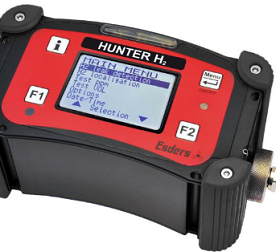- Home
- About Us
- Products
- Rohmann Eddy Current
- Secu-Chek UV-LED Lamps
- Sonatest
- MR Chemie
- NOVO DR
- Hoffmann Tam Panels
- Desoutter Industrial Tools
- Novotest
- Integrated Design Tools (IDT Vision)
- Dakota NDT
- DeFelsko Corporation
- AVIONICS
- Sonotec Ultrasonic Solutions
- Sonotec Ultrasonic Hand-Tools
- G.A.L. Gage Company
- Western Instruments Inc.
- Esders Gas Technology
- Yoancomposite
- Hinode Electric
- Services
- News
- Contact Us
 (65) 6878 0608  (65) 6878 0609 |
Description
The correlation and electro-acoustic methods are often used to detect and locate leakages. But for some reasons certain leakages are not detectable with this methods. For the locating of e.g. very small leakages the application of tracergas is an alternative succesful method. For this method a certain tracergas is infilled under pressure into the pipe. If there is still water inside the pipe should be drained or blowed out.
How to use in practice
The leaky pipe is filled with inert gas (5 Vol.% hydrogen and 95 Vol.% nitrogen). This gas is commercially available and, in addition to the low price, has the advantage that it is neither combustible nor poisonous. Its use is thus completely safe. As the smallest element, hydrogen has the property of leaking from even the smallest pinhole. Because hydrogen is significantly lighter than air, it migrates upwards and is located above the leak by the bell probe. At the same time, hydrogen also passes through soil, flooring, concrete and screed.
As the smallest element, hydrogen has the property of leaking from even the smallest pinhole. Because hydrogen is significantly lighter than air, it migrates upwards and is located above the leak by the bell probe. At the same time, hydrogen also passes through soil, flooring, concrete and screed.
The location of the strongest concentration of hydrogen is easily determined using a concentration indicator on the display of the measurement device. Depending on the actual concetration and situation it is possible to use different scales and sensors. One scale is for very low concentrations (0 … 1.000 ppm H2) and one is for pinpointing (0 … 5% H2). With this important feature it is possible to avoid a temporary contamination of the high sensitive sensor. User of devices with only one (sensitive) sensor need to wait in this case for minutes until getting a useful signal again or can even damage the sensor.

Features:
- First sensor: Extremely quick response on smallest hydrogen concentrations. Specialized for hydrogen with a resolution of 0,1 ppm H2
- Second sensor: to protect the first sensor and used for higher concentrations e.g. pinpointing in pinholes
- Integrated powerful pump for a high flow and under pressure
| Technical Data | |
| Display | LCD graphic display 128 x 64 pixels, illuminable |
| Power Supply | NiMH rechargeable battery pack |
| Operating temperature | -10 °C to +50 °C |
| Operating time | > 10 hours |
| High sensitive range | measurement range: 0 … 1.000 ppm H2, resolution: 0,1 ppm Response time: T90 < 5 seconds for H2 (hydrogen) measurement range: 0 … 5 Vol.% H2 in N2, resolution: 0,01 % Response time: T90 < 5 seconds for H2 (hydrogen) |
| Pumpe | > 40 l/h, > 300 mbar |
| Protection | IP54 |
| Dimensions | 200 x 100 x 87 mm |
| Weight | approx. 1.100 g (incl. Accu) |




